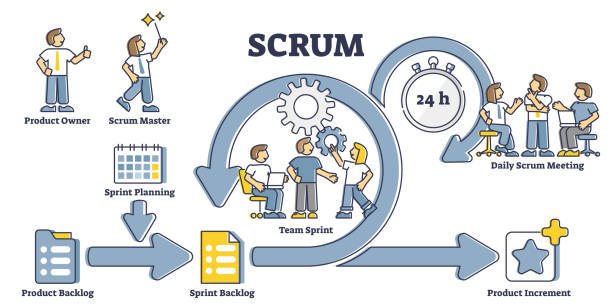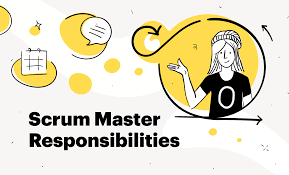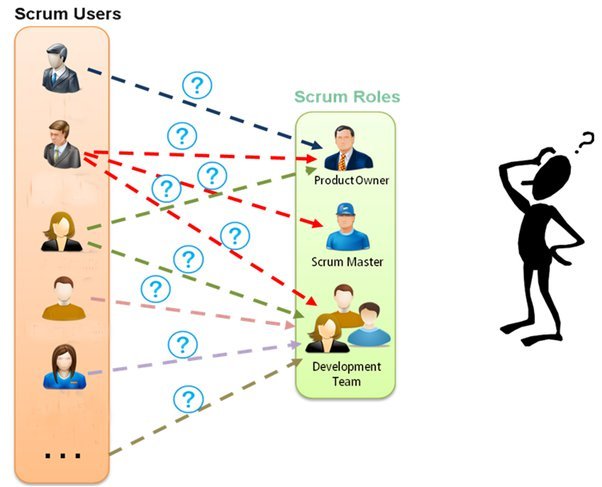Understanding the Basics of Scrum Master
Scrum framework involves a product owner submitting a request, which is broken down into sprints by a Scrum Master-led team. This fast-paced, reiterative process optimizes the product lifecycle, allowing companies to produce a viable deliverable in two to four weeks.
What is a Scrum Master?

A Scrum master is a key figure in any organization, responsible for ensuring the Scrum team follows agreed-upon processes and preventing obstacles. They act as an interface between the team and other teams, balancing soft skills with the latest tools and methods. They maintain a high-level view, helping teams understand organizational and technical dependencies, avoiding chokepoints, and creating a culture of accountability. This role is broad in influence throughout an organization.
Scrum Master Responsibilities

1. Implement Project Management/Best Practices
The Scrum Master is responsible for onboarding project teams, integrating them, providing a clear product vision, facilitating communication, monitoring progress, providing feedback, and driving a culture of agility and learning.
2. Keep all Parties on Track and Informed
The Scrum Master conducts daily team meetings to monitor project progress, identify roadblocks, and communicate with stakeholders, ensuring team members meet deadlines and achieve desired outcomes.
3. Introduce Agile Engineering Practices
Scrum Masters promote continuous integration (CI) and automation to enhance efficiency. CI tools integrate code into a central repository, while automation reduces risk and time. Pair programming allows real-time collaboration between developers, enhancing product architecture and quality.
4. Coach Team Members
The Scrum Master is a coach and product owner, ensuring the development team is trained in Agile processes, dedicated, self-managed, and constantly seeking ways to improve performance and productivity.
5. Host Daily Scrum Meetings
The Scrum Master manages team organization by hosting daily meetings, including sprint planning and reviews, to discuss accomplishments, plans, and obstacles, ensuring all team members, including remote workers, can attend.
6. Assist the Product Owner With the Product Backlog
The product backlog is a list of tasks for the team, created and maintained by the product owner, with assistance from the Scrum Master, who refines it using scrum meetings.
7. Remove Roadblocks
The Scrum Master maintains team focus by removing distractions and roadblocks, ensuring only essential team members attend meetings and ensuring workload redistribution. They can coordinate with meeting organizers and product owners to ensure the team’s progress and minimize unimportant meetings.
8. Teach Scrum Practices and Principles
The Scrum Master, proficient in key practices, mentors new employees, helps them understand product scope, ensures work doesn’t slow down, and teaches team members self-organization and focus, improving productivity and ensuring smooth onboarding.
Scrum Master Roles

Product owner
Scrum Master’s Role in Product Ownership
• Managing product backlog effectively.
• Communicating owner’s wishlist to project team.
• Organizing and optimizing product backlog.
• Organizing necessary scrum events.
Organization
Scrum Master Role Overview
• Lead and coach scrum adoption.
• Plan scrum implementation.
• Implement changes to boost team productivity.
• Collaborate with other scrum masters for improved methodologies efficiency.
• Understanding top qualities crucial for success.
Conclusion
Scrum Masters are specialized in adopting and implementing agile methods to increase team productivity and improve deliverable quality. To build a career in this field, earning an Scrum Master provides expertise in Agile and Scrum concepts and best practices.
To Register for PSM and PSPO Courses in TARGET AGILITY
Click Her









